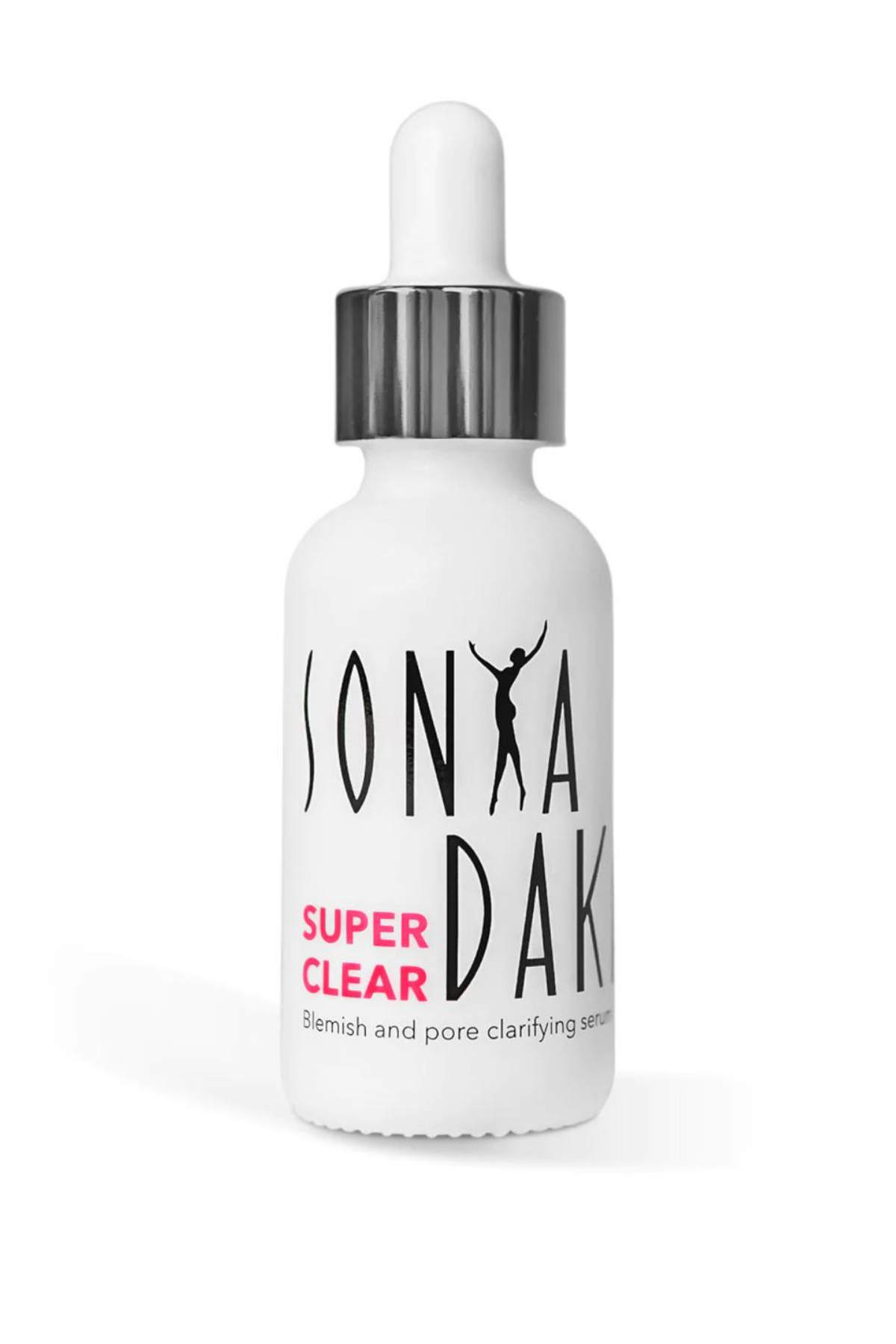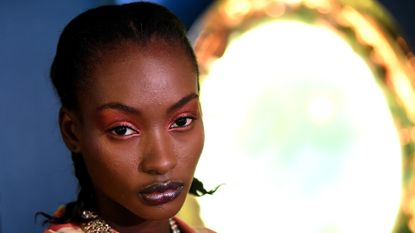

Celebrity news, beauty, fashion advice, and fascinating features, delivered straight to your inbox!
Thank you for signing up to . You will receive a verification email shortly.
There was a problem. Please refresh the page and try again.
Period pimples—there’s a lot to unpack there, let me tell you. Mood swings are thriving, cravings for zit-causing sugary foods are at an all time high, and one look at the red bumps taking over your chin just makes matters worse. It’s a vicious cycle, really. But that’s just how the hormonal acne story goes. And while it’d be lovely for this fun stuff to stop after the teenage years, such is not the case. “The prevalence of adult acne is on the rise. An estimated 50 percent of women in their 20s, 35 percent of women in their 30s, and 26 percent of women in their 40s have reported to suffer from acne,” says Dr. Joshua Zeichner, board-certified dermatologist in New York City. The primary causes? “Hormones, diet, and stress.”
But before descending into a popping, picking panic mode or buying all the acne spot treatments you can find, hear the dermatologists out. These types of breakouts are completely normal, somewhat expected, and there’s a pretty cut and dry formula to figure out how to treat hormonal acne. The checklist goes as follows: Create a skincare routine with some of the best hormonal acne products, avoid inflammation-inducing foods, reduce stress (easier said than done, I know), and consult with a board-certified dermatologist. To get into all the nitty-gritty hormonal acne details, keep reading.
What Is Hormonal Acne?
Hormonal acne is just what it sounds like—a spike in acne due to a change in hormones. “It’s a type of cyclical acne that many women experience the week before a menstrual period,” explains board-certified dermatologist Dr. Rachel Nazarian. “The classic pattern is deep, red, tender bumps and although these pimples are often found on the lower face, jawline, and neck, they can present anywhere on the face or body.”
It’s important to note that “hormonal acne” is not the same hormone-caused acne experienced by young teens. “When we talk about hormonal acne, we are talking about adult female acne,” explains board-certified dermatologist Dr. Hadley King. “Teen acne tends to be less cyclical and less predictable.”
What Causes Hormonal Acne?
Hormonal acne is obviously influenced by hormonal fluctuations, but spikes are a bit more complicated. It’s typically a combination of a handful of factors including hormones, food, and stress.
Hormones
Dr. King explains that when your time of the month starts to approach, hormones are on a bit of a rollercoaster. When certain hormones, mainly testosterone, spike, it signals the skin to produce more oil. The result? Oily skin, clogged pores, and inflammatory acne. “The most common pattern is for the flare to strike seven to 10 days before the onset of bleeding, and subside once bleeding starts,” she adds.
Food
Let’s bust some myths. Contrary to popular belief cheese and yogurt are not associated with acne breakouts. So be our guest, eat the dairy! That said, food with a high glycemic index, aka highly processed carbohydrates and sugars, along with cow’s milk, can prompt a bad skin day. “The thought is that the high sugar load promotes inflammation and activates oil glands,” says Dr. Zeichner. Dr. Nazarian also points out that foods with natural growth hormones and supplements or powders containing creatine, an amino acid that helps with exercise performance, can also cause hormonal acne flares.
Stress
“Stress breakouts are real,” emphasizes Dr. Zeichner. “Stress causes a spike in the same hormones that prepare your body for the flight or fight response.” In turn, Dr. Nazarian explains that the main stress hormone, cortisol, gets triggered. “Cortisol messages the skin to increase oil production and often leads to acne pimples.”
What Does Hormonal Acne Look Like?
By and large, hormonal acne is going to present as a cyst, aka a blind pimple. “While teens and adolescents typically develop a mix of blackheads, whiteheads, and red bumps throughout the face, adult acne is usually red, angry pimples along the jawline and chin,” says Dr. Zeichner. “In many cases, these pimples may be deep and painful.”
How to Treat Hormonal Acne
There are a handful of changes you can make and products you can incorporate to lessen the severity of your breakouts. Ahead, we’re breaking down a handful of ingredients and products that can be used to treat hormonal acne. But please remember (we beg you) that not every product in your skincare routine should be abrasive.
“A good tip to remember is to use very gentle products that do not disrupt the pH of the skin and calm inflammation,” explains Dr. Nazarian. “You should discontinue any strong cleansers that contain perfumes and switch to something much more gentle. A great moisturizer that doesn’t clog pores and is non-comedogenic is also important. Although you won’t see results immediately, staying committed to a good skin care regimen will pay off with time.”
Incorporate Benzoyl Peroxide
“Benzoyl peroxide is an ingredient commonly thought of for the treatment of teenage acne, but the reality is that it is an extremely effective ingredient for hormonal acne as well,” says Dr. Zeichner. “It works by lowering levels of acne-causing bacteria on the skin and reducing inflammation. At the same time it can help open up the pimples.” He adds that it’s best to look for formulas—be it spot treatments or face washes—with roughly 2.5 percent of benzoyl peroxide as they’re less irritating and just as effective as those with higher concentrations.
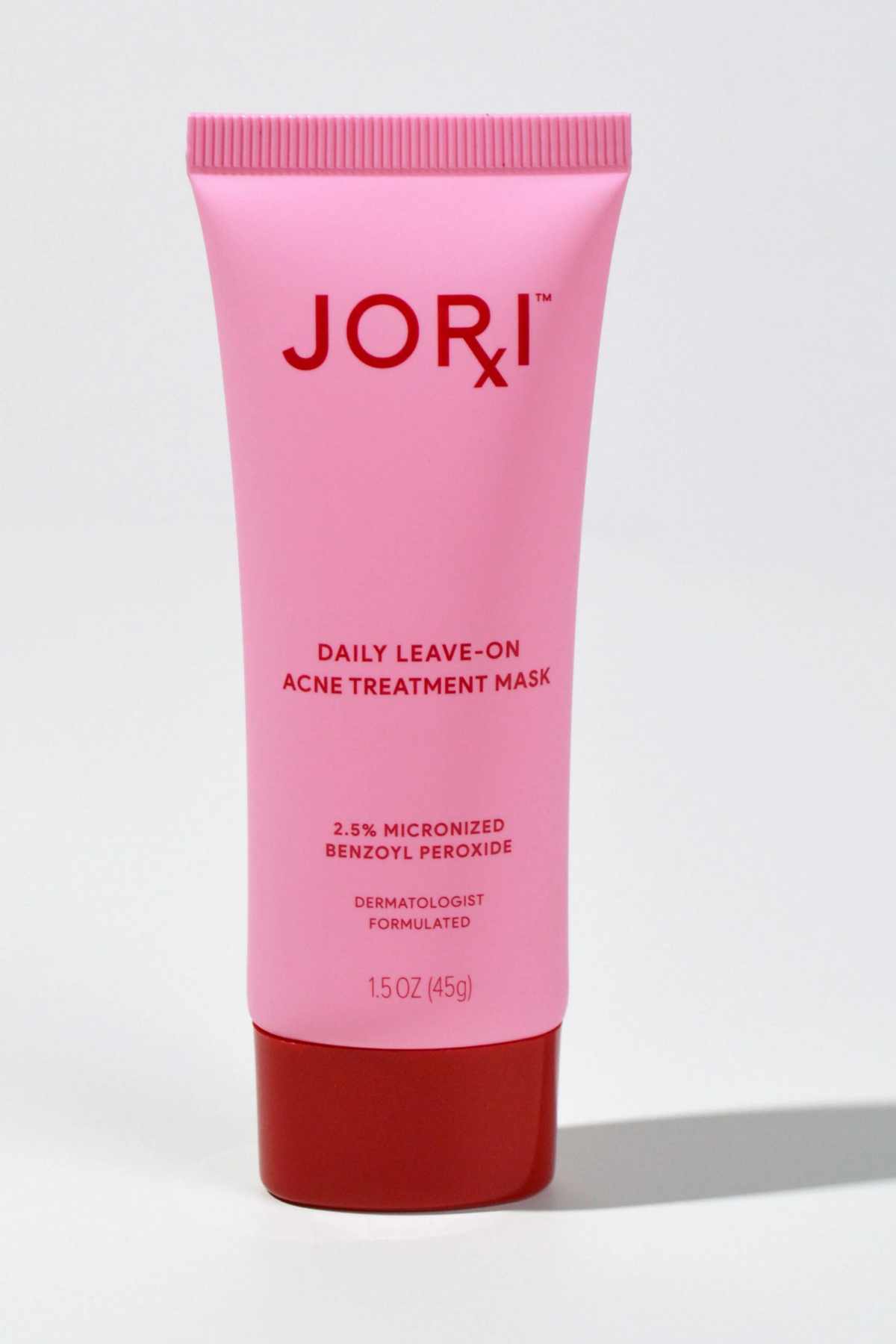
"The Jori Daily Leave-on acne treatment mask uses micronized 2.5 percent benzoyl peroxide in an ultralight, non-irritating water gel," explains Dr. Zeichner. "Micronization allows benzoyl peroxide to penetrate deep into the pore where acne begins, rather than sitting on the surface of the skin causing irritation. Use this daily on areas that tend to break out to get rid of pimples you have and prevent new ones from developing. The formula contains a blend of botanicals that balance the contributing factors to adult acne, like hormones, diet, and stress."
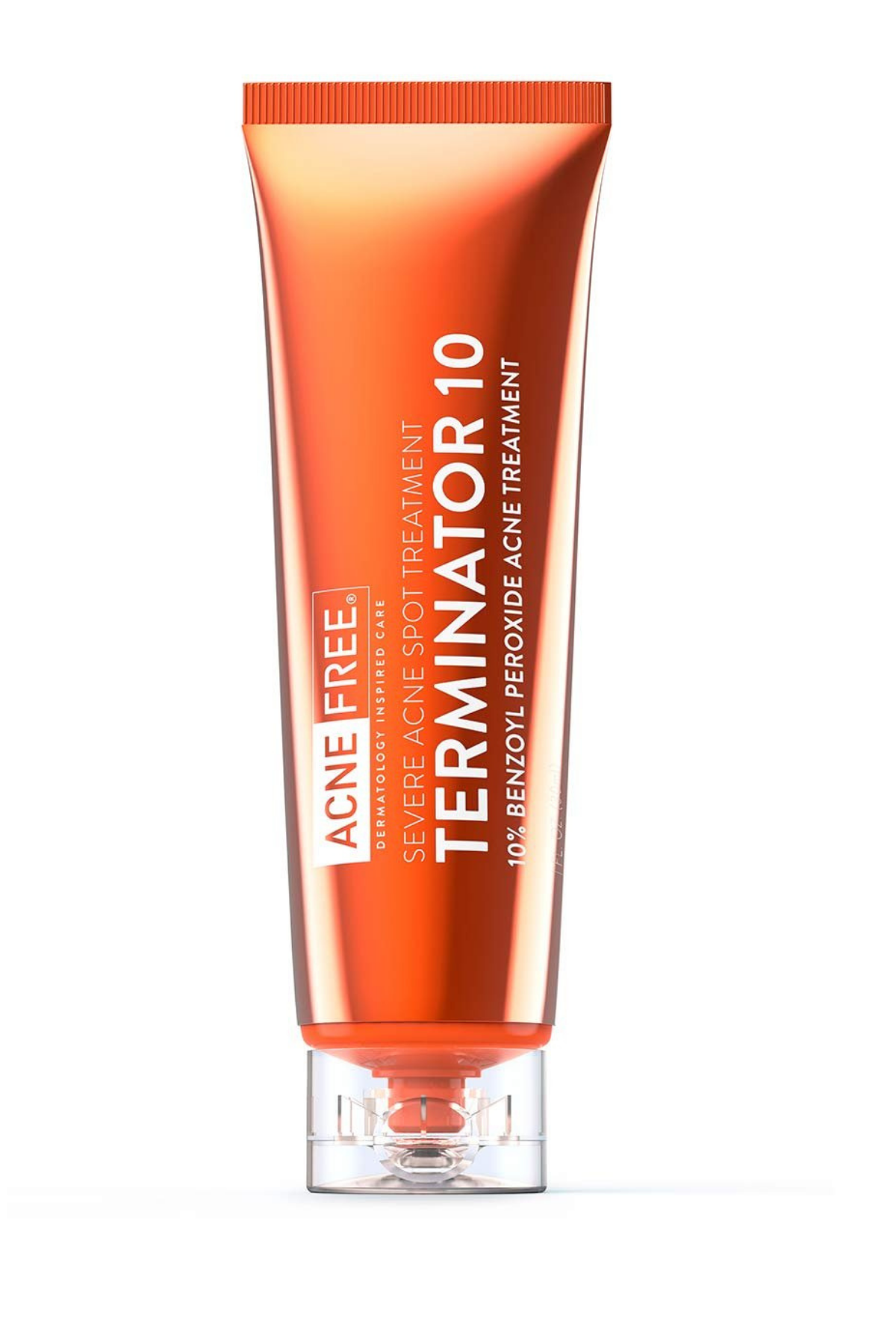
"AcneFree's Terminator 10 Acne Spot Treatment contains 10 percent micro-benzoyl peroxide for its acne-fighting properties, and is combined with calming ingredients like chamomile, ginger, and sea whip. These anti-inflammatory ingredients are helpful to decrease the inflammation in the active pimple," says Dr. King. "They can also be helpful to soothe the skin because the other active acne-fighting ingredients can be irritating. I recommend applying a small amount in a thin layer in order to avoid unnecessary irritation. And I would recommend using it one to three times per day."
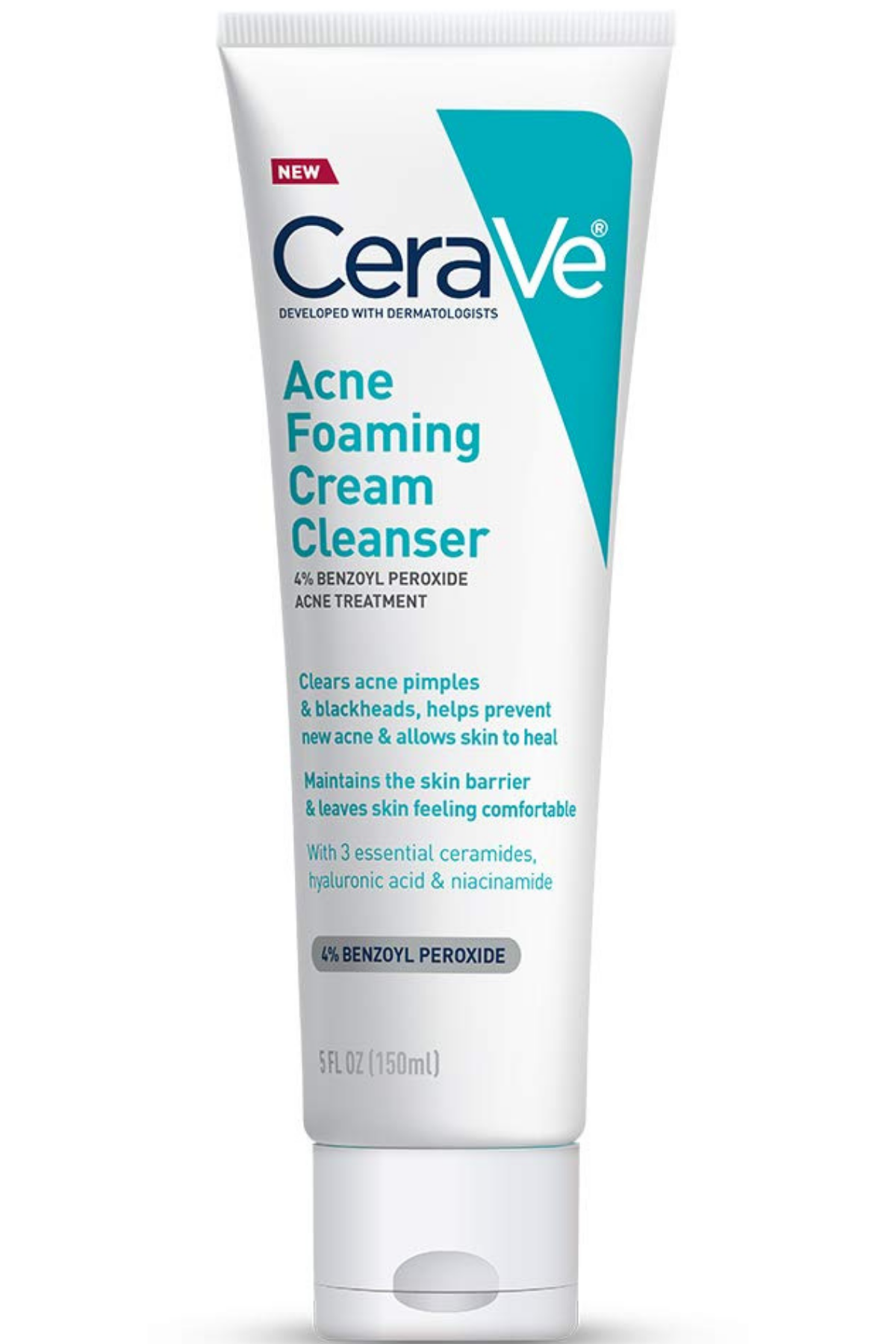
If a spot treatment isn't your go-to, get your benzoyl peroxide fix with this four percent cleanser. Thanks to niacinamide and hyaluronic acid, it's not drying in the slightest, so feel free to use it all the time—not just around hormonal acne flares.
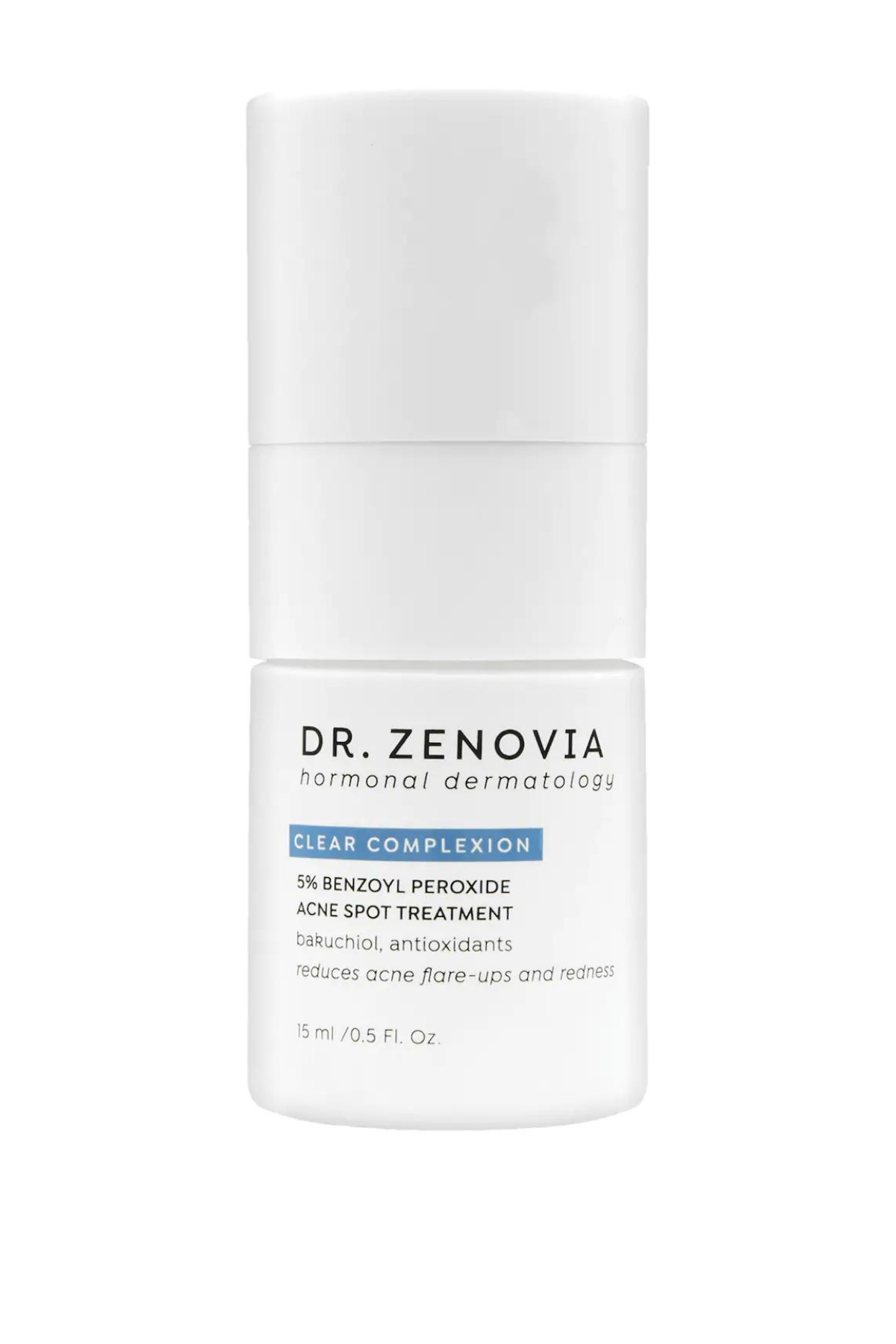
This dermatologist-founded line was formulated specifically with hormonal acne in mind. This spot treatment works wonders for reducing redness and inflammation. Plus, it can be used up to three times daily, which is especially useful when skin is acting up.
Exfoliate With Salicylic Acid
As your menstrual cycle starts to roll around, consider adding a salicylic acid-powered product into your routine. “Salicylic acid is an excellent pore-clearing ingredient because it exfoliates the surface of the skin and penetrates into pores to remove oil. This helps to prevent pores from becoming clogged and can help remove clogs that have already formed,” explains Dr. King. “This chemical exfoliation will dissolve the bonds that hold dull, dead skin cells on the surface of the skin and reveal smoothing brighter skin underneath.” Dr. Zeichner adds that salicylic acid is also great when delivered via a spot treatment, as it can dry out angry, juicy pimples.
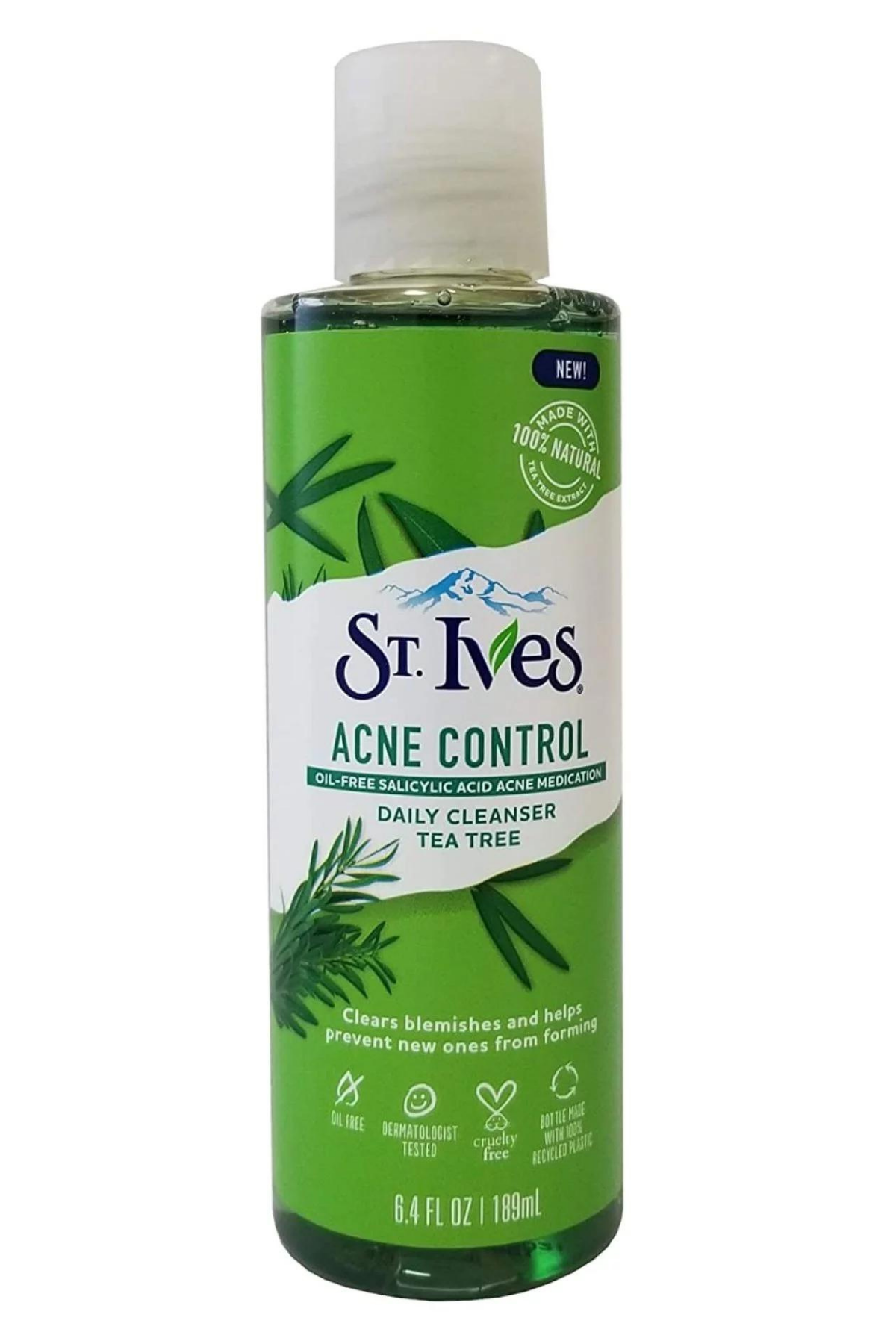
Dr. King is a huge fan of this two percent salicylic acid cleanser. "It contains tea tree oil, which has antimicrobial properties," she explains.

Dr. Nazarian *loves* this Kiehl's moisturizer for hormonal acne. "It can be incredibly gentle, while fighting the bacteria that contributes to inflamed hormonal acne formation. It’s also less drying than other traditional acne medications," she explains.
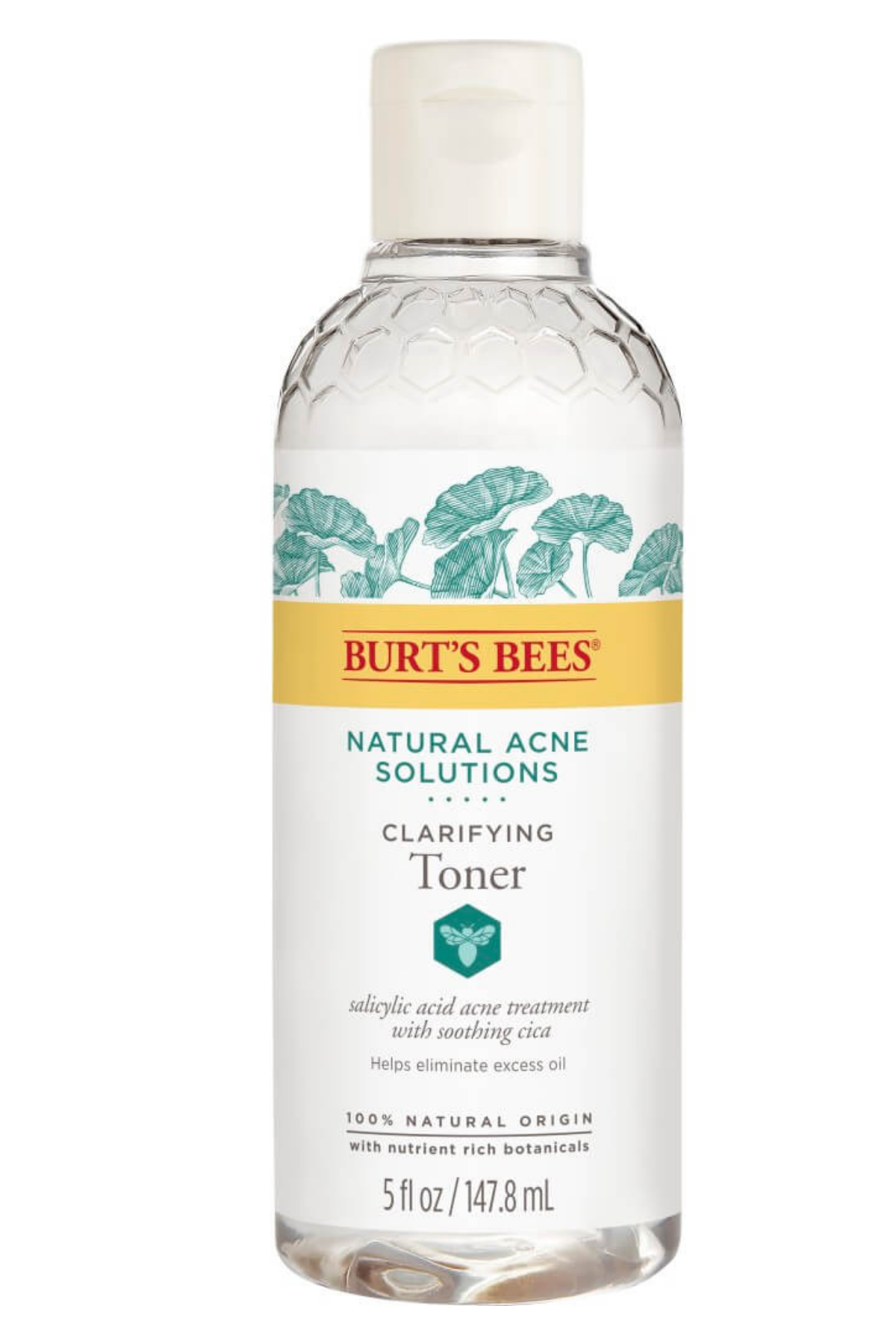
If your skin runs on the dry or sensitive side, but you still want to keep acne under control during flare-ups, this toner is the way to go. It's going to treat with salicylic acid, without stripping the skin. It's packed with soothing cica to help keep your complexion balanced.
Try a Retinoid
Unlike a salicylic acid or benzoyl peroxide product that can be incorporated in tandem with acne flares, using a topical retinoid is a long-term commitment. Not only does it take a few weeks to see results, but it also needs to be used consistently to maintain progress. But using a retinoid is a *huge* game changer. “Topical retinoids act like pipe cleaners to keep the pores clear and prevent cells from sticking together and blocking the follicle,” explains Dr. Zeichner.
“They also decrease the discoloration that can be left after a pimple, and because they increase the turnover of skin cells, this reduces the healing time for acne,” adds Dr. King. While stronger retinoids are only available via a prescription, adapalene is available over the counter and can be found at drugstores across the board. (Doctor's note: Using a retinoid makes skin more sensitive to the sun, so it's *extra* important to wear sunscreen.)
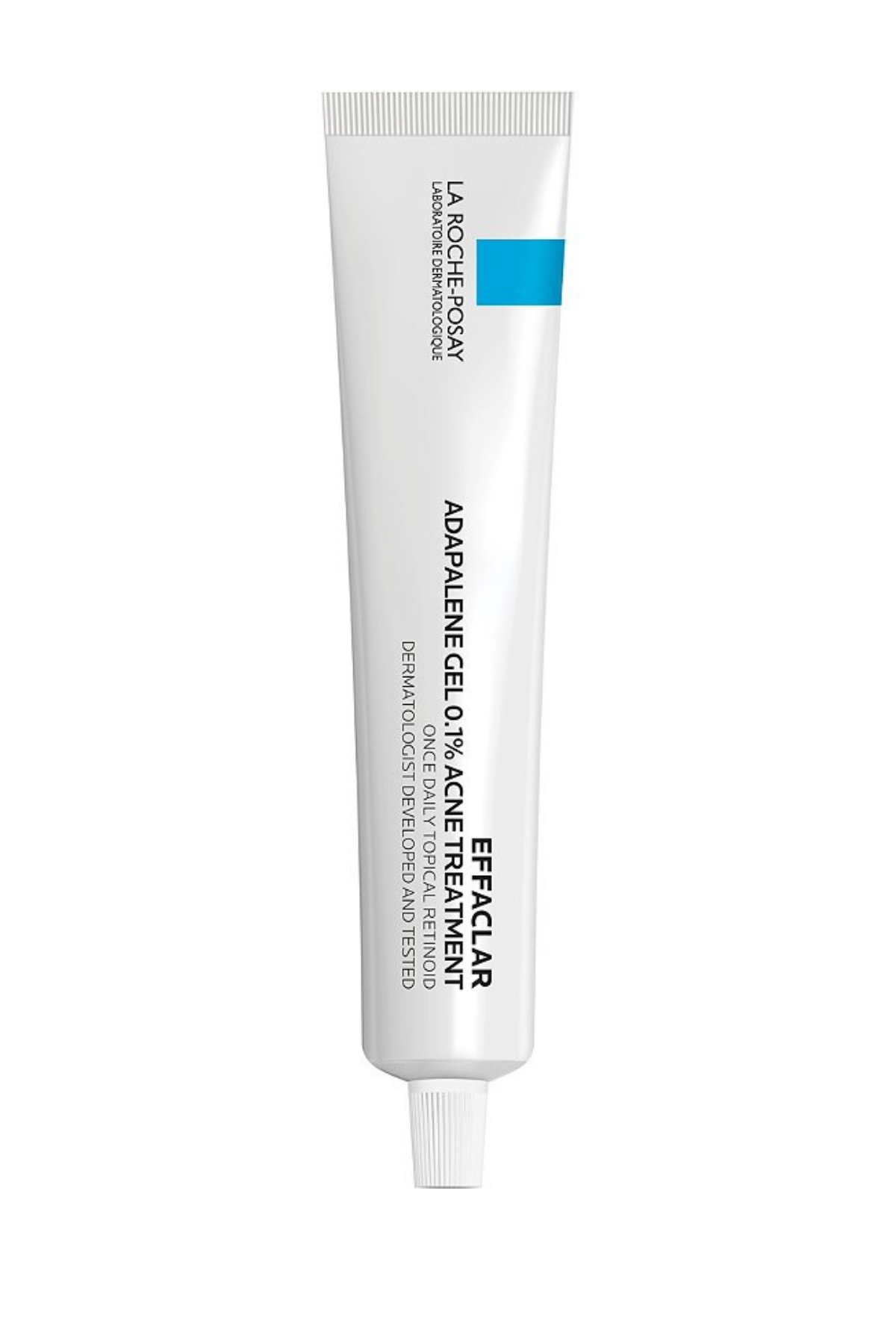
"Topical retinoids work by preventing skin cells from sticking together and blocking the pores," explains Dr. Zeichner. "Make sure to wear sunscreen if you’re using topical retinoids because they can make you sensitive to sunburn. It takes several weeks to adjust to topical retinoids, so start out applying it every other night and use more frequently as tolerated."
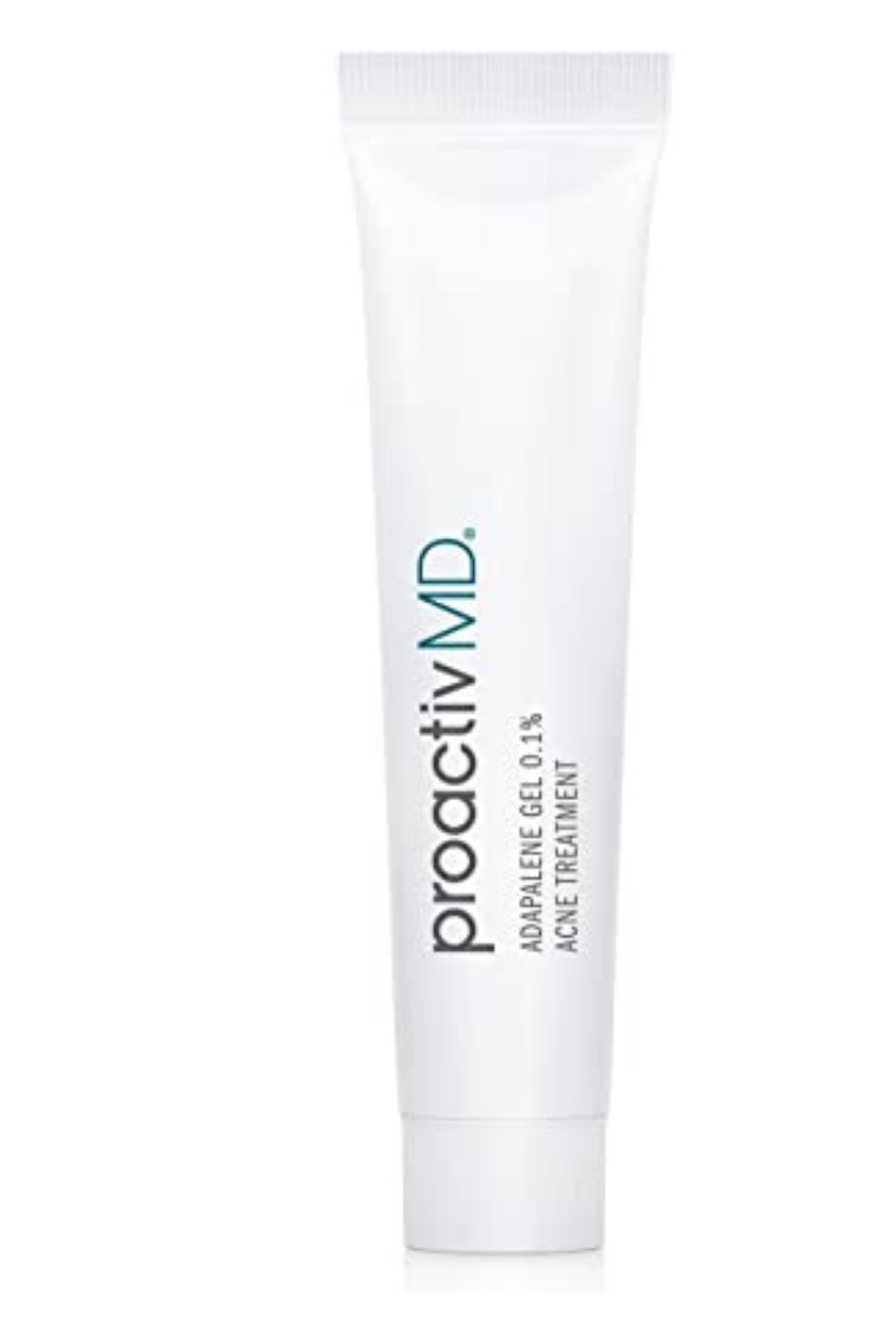
"A great ingredient that can combat acne-inducing messages with hormonal acne is adapalene," adds Dr. Nazarian. "Adapalene is a third-generation retinoid that can decrease oil production and regulate skin cells to prevent acne pimples." This Proactiv product is one of her faves.
Consider Oral Medications
Don’t get us wrong: Topical products can work wonders for hormonal acne. But if they’re not doing the job after six to eight weeks of use, you may want to consider paying a visit to your dermatologist. “Over-the-counter medications play very well with the prescription medications and many dermatologists will mix and match,” says Dr. Nazarian. “Choosing the appropriate regimen involves discussing what your expectations are, the severity of acne, what your lifestyle consists of, and how quickly you want to see improvement.”
While there are a handful of medications at their disposal, the most common oral pills used to regulate hormones and their effect on oil glands are birth control and spironolactone. It’s not uncommon for these two to be used in tandem either. On the topical front, there are a range of creams—including Twyeno, Winlevy, and Altreno—that side-swipe some of the drying side effects of OTC options. (Doctor’s note: Birth control’s ability to help with acne depends largely on the compound. Some forms, such as progesterone-only birth control, IUDs, shots, or mini pills can make acne worse.)

Samantha Holender is the Beauty Editor at Marie Claire, where she reports on the best new launches, dives into the science behind skincare, and keeps up with the latest trends in the beauty space. She has previously written for Us Weekly, Popsugar, Makeup.com, Skincare.com, and Philadelphia Wedding. Follow her on Instagram @samholender.
-
 How This Royal Lived Incognito for 13 Years
How This Royal Lived Incognito for 13 YearsThis is kinda crazy.
By Iris Goldsztajn
-
 Prince Harry May Well Come Back to the U.K. "In a New Role" When Charles Is King, His Former Protection Officer Says
Prince Harry May Well Come Back to the U.K. "In a New Role" When Charles Is King, His Former Protection Officer SaysCould you see this happening?
By Iris Goldsztajn
-
 Princess Anne Has a Pretty Unusual Food Preference, According to a Former Royal Footman
Princess Anne Has a Pretty Unusual Food Preference, According to a Former Royal FootmanSome might even call it...bananas.
By Iris Goldsztajn
